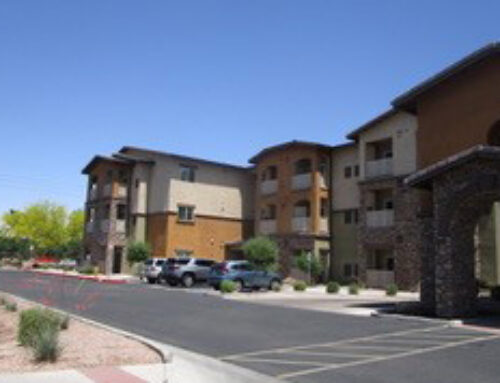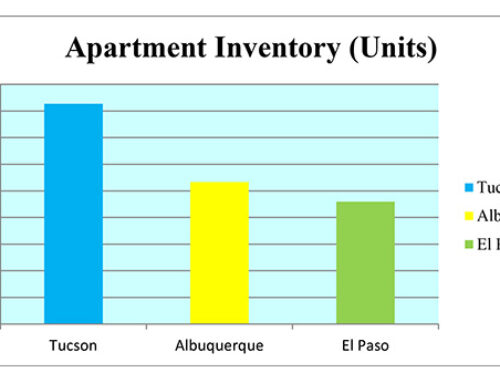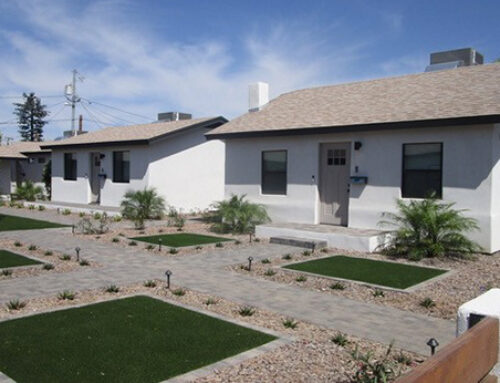Tale of Three Cities – Revisited – 6-2024
The purpose of this report is to show the strengths and weaknesses of Tucson, Arizona, and its sister cities, namely Albuquerque, New Mexico and El Paso, Texas. This trio is a sisterhood, as they have many commonalities including climate, and population size. They also all share the distinction of a military base and a university. The statistics and data shown herein illustrate the big picture and may not reflect exact figures. Since our last publication in July of 2023, there has been some changes. These changes include, but are not limited to: solar projects, new employers, inflation and interest rates remaining high, and new infrastructure projects.
Tucson, Arizona
Tucson is about 60 miles north of the US-Mexico border and about 100 miles south of Phoenix, Arizona. The metropolitan population is about 1.04 million but the 2020 US Census Bureau reports a population of about 543K. Major industries in Tucson include defense/aerospace, healthcare, and mining. Tucson has a minor league hockey and soccer team, and an arena football team, but the most followed teams are associated with the University of Arizona. The Old Tucson Studios have been revitalized with concert, filming, Halloween, and Christmas venues. Another entertainment venue approved in March of 2024 is the Mosaic Quarter along the southeast side of I-10 and Kino Parkway. The project will include a 3,000-seat ice rink, large field house, sportsplex, and pavilion.
The current real estate trends include the build-up of downtown with new multi-family developments, street-car transportation, student housing, hotels, restaurants, and retailers. Tucson has also become a distribution hub for Southern Arizona with the Port of Tucson. The Port of Tucson is a full-service inland port, rail yard and intermodal facility. The port consists of 767 acres with 50,000 linear feet of rail track, with cold storage, dry storage, distribution, and manufacturing. Tucson International Airport completed a $360 million project that added a parallel runway with the addition of new taxiways, aircraft guidance systems, and modernization of the airfield geometry to meet current FAA standards. In October of 2023, Tucson Electric Power announced plans for the Roadrunner Reserve project, which is a 200-megawatt, and 800-megawatt-hour batter energy storage system located in southeast Tucson. This project will have the capacity of powering 42,000 homes for four hours. The construction is anticipated to begin in the summer of 2025. There are four Amazon facilities in the Tucson area: the 857K SF Fulfillment Center built in 2019, the 49,500 SF “Last Mile” facility, 270K SF Delivery Station, and the newest is a 220K SF facility in Marana. The Marana facility has been completed, and currently operating at about half capacity.
There are also plans by American Battery Factory to construct a 2 million SF lithium iron phosphate battery plant, which will create 300 jobs at the onset and will be scaled up to a thousand jobs, with $3.1 billion in economic impact to Arizona. The expected opening is in Spring of 2025. Sion Power Corporation, a Tucson-based battery developer for electric vehicles signed a pair of leases totaling 212K SF. The expansion is expected to be complete by 2026 and will create over 150 high quality jobs. Becton Dickinson is building a 120,000 SF final stage manufacturing and sterilization facility on 32 acres, on the northeast side of Kolb Road and Valencia Road. The company says that the facility will employ about 40 skilled people and the facility will cost $65 million. Hudbay Minerals is beginning Copper World Complex on the west side of the Santa Rita Mountains, about 28 miles southeast of Tucson. Copper World Complex is anticipated to be a 44-year mining project and will create 400 direct jobs. As of early 2023, Hudbay was carving roads, drill pads and clearing ground for tailings piles. The project is still awaiting permits for aquifer protection and air quality. In February of 2024, Belden leased 302,443 SF at 3610 E. Valencia Road for a state of the art manufacturing facility. Shamrock Foods also acquired 81 acres for a distribution center in Marana, but no construction plans have been announced yet.
An on-going issue with Tucson as well as the other two cities is water availability. Tucson is heavily dependent on the Central Arizona Project (CAP) canal for water, which may be less available in the long-term with ongoing cuts from long-term droughts and over usage. However, the water table is currently up from prior years with an estimated 5.5 years of excess Colorado River water in aquifers. Other options will have to be visited soon for Tucson to grow at a sustained rate.
The major difference between Tucson and its sister cities is that it is in the shadow of a much larger city. The Phoenix metropolitan area is about 5 million people and has sports venues, a much larger international airport, corporate industries, loop freeways, and a light rail line. This is both a benefit and a detriment to Tucson. It could be seen as a detriment, since the state and corporations focus their time and energy on the greater Phoenix area.





